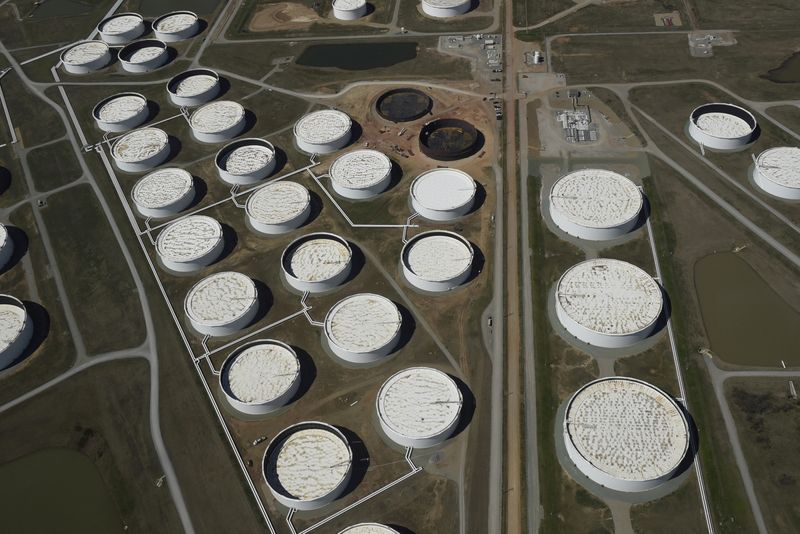By Scott DiSavino
NEW YORK (Reuters) -Oil prices slid about 2% to a 12-week low in volatile trade on Wednesday, extending the prior session's heavy losses as investors grew more worried energy demand would take a hit in a potential global recession.
Looking ahead, analysts polled by Reuters forecast U.S. crude inventories fell about 1.0 million barrels last week. A drop in crude stockpiles could support prices. [EIA/S] [API/S]
The American Petroleum Institute (API), an industry group, will issue its inventory report at 4:30 p.m. EDT (2030 GMT) on Wednesday. The U.S. Energy Information Administration (EIA) reports at 11:00 a.m. EDT (1500 GMT) on Thursday. Both reports were delayed one day by the U.S. July Fourth holiday.
Brent (LCOc1) futures for September delivery fell $2.08, or 2.0%, to settle at $100.69 a barrel. U.S. West Texas Intermediate (WTI) crude fell 97 cents, or 1.0%, to settle at $98.53. Both benchmarks closed at their lowest since April 11, in technically oversold territory for a second straight day.
U.S. diesel futures also fell over 5%.
Trade was volatile, with both crude benchmarks up over $2 a barrel early on supply concerns and down over $4 a barrel at session lows. Crude futures have been extremely volatile for months.
On Tuesday, WTI slid 8% while Brent tumbled 9%, a $10.73 drop that was the third biggest for the contract since it started trading in 1988. Its biggest drop was $16.84 in March.
Analysts at investment banks Goldman Sachs (NYSE:GS) and UBS said oil prices dropped due to recession fears.
UBS cited numerous reasons, including "the unwinding of the oil trade as inflation hedge, a stronger US dollar, hedge funds reacting to negative oil price momentum, producer hedging, and new mobility restriction concerns in China."
With the U.S. Federal Reserve expected to keep raising interest rates, open interest in WTI futures fell last week to its lowest since May 2016 as investors cut back on risky assets.
"There are undeniably concerns about recessionary demand destruction, plus, WTI open interest at multi-year lows has created a bit of a liquidity crunch," said Robert Yawger, executive director of energy futures at Mizuho.
The head of the International Monetary Fund said the outlook for the global economy had "darkened significantly" since April and she could not rule out a possible global recession next year given the elevated risks.
U.S. job openings fell less than expected in May, pointing to a still-tight labor market that could keep Federal Reserve policy aggressive as tries to bring high inflation down to its 2% target.
Oil prices were also slammed by a soaring U.S. dollar, which hit a near 20-year high against a basket of currencies, making oil more expensive for buyers using those other currencies.
In China, the world's biggest oil importer, the market worried that new COVID-19 lockdowns could cut demand.

China's crude oil imports from Russia in May soared 55% from a year earlier to a record level. Russia displaced Saudi Arabia as top supplier, with refiners grabbing discounted supplies as Western countries sanctioned Moscow over its invasion of Ukraine.
Further pressuring oil prices, Equinor ASA (NYSE:EQNR) said all oil and gas fields affected by a strike in Norway's petroleum sector were expected to be back in full operation within a couple of days.